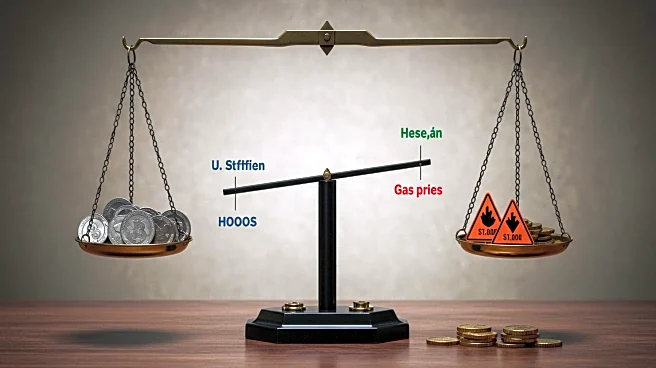Rapid Read • 8 min read
U.S. producer prices experienced their largest increase in three years during July, driven by significant rises in the costs of goods and services. This development suggests a broad pickup in inflation, potentially affecting the Federal Reserve's anticipated interest rate cut next month. The Labor Department reported a 0.9% jump in the producer price index for final demand, marking the largest advance since June 2022. Goods prices saw a 0.7% increase, with food prices contributing significantly due to a 38.9% rise in the cost of fresh and dry vegetables. Services prices also soared by 1.1%, influenced by increases in machinery and equipment wholesaling, portfolio management, and road transportation of freight. Economists had hoped that moderate services price gains would mitigate the inflationary impact of higher goods prices resulting from President Trump's import tariffs.
AD
The surge in producer prices highlights the ongoing impact of import tariffs on domestic prices, challenging businesses as they face squeezed margins due to higher costs for imported goods. This situation may lead to a stronger pass-through of levies into consumer prices, potentially causing inflation to rise modestly over the second half of 2025. The Federal Reserve's policy decisions, particularly regarding interest rates, are likely to be influenced by these inflationary pressures. The broader economic implications include potential shifts in consumer spending and business investment, as well as impacts on financial markets, with U.S. stocks opening lower and Treasury yields rising.
The Federal Reserve's next steps will depend heavily on upcoming employment and inflation data, with financial markets anticipating a possible resumption of rate cuts in September. The nomination of E.J. Antoni to head the Bureau of Labor Statistics raises concerns about the quality of economic data, which could further complicate policy decisions. Businesses and consumers may need to adjust to the evolving economic landscape, particularly if inflation continues to climb.
The resource constraints faced by the Bureau of Labor Statistics, exacerbated by deep spending cuts and layoffs, have raised concerns about the reliability of government-produced economic data. This situation underscores the importance of accurate data in shaping economic policy and public perception. The broader implications of these challenges may affect trust in economic indicators and influence future policy debates.
AD
More Stories You Might Enjoy











